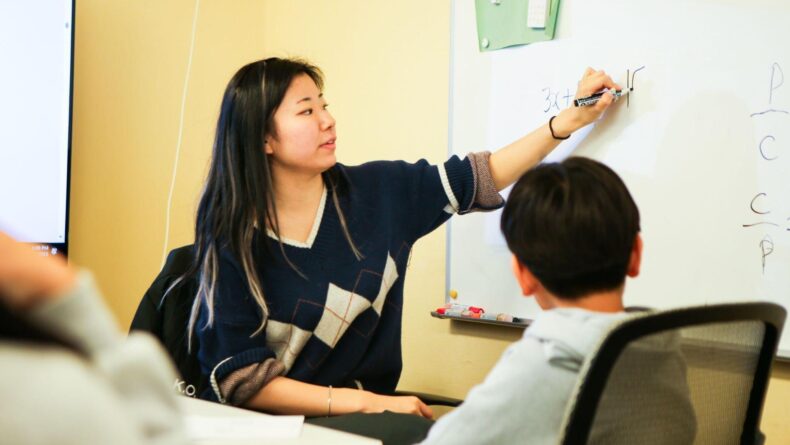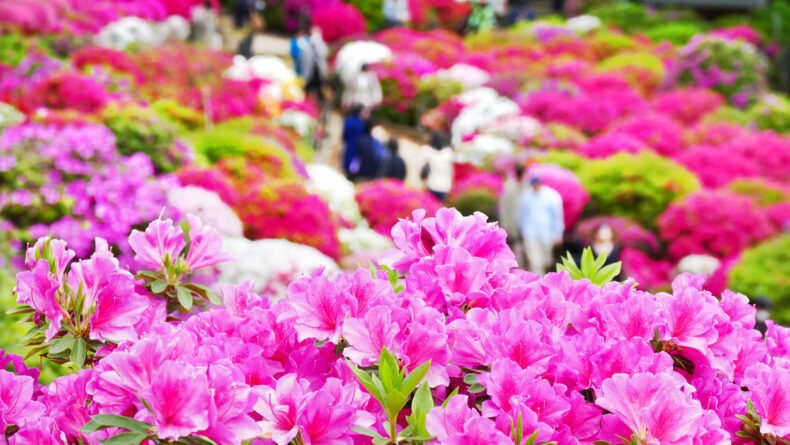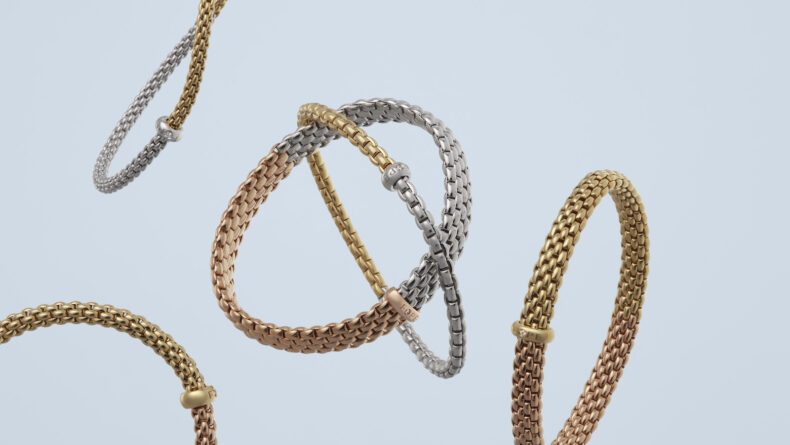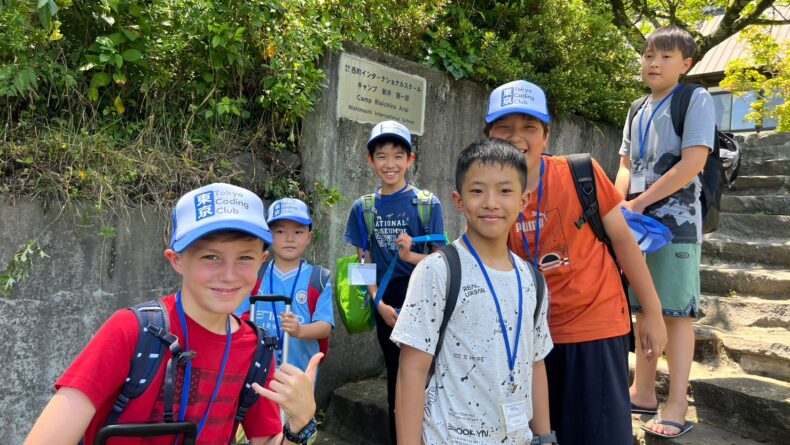A Weekend Getaway To Rabbit Island
Cute Bunnies In Hiroshima? Deal.
Cute rabbits, stunning natural surroundings and one of the best-preserved old towns in Japan—Takehara in Hiroshima Prefecture is the perfect location for a charming weekend getaway from the hustle and bustle of Tokyo.
An old merchant town, Takehara achieved success during the Edo period (1603-1868) as one of Japan’s leading salt making and sake brewing towns. This Hiroshima Prefecture city is a fantastic destination for anyone interested in history, culture and nature—not to mention our main goal: the awfully cute rabbit island!
Located in the south-central part of Hiroshima Prefecture, facing the picturesque Seto Inland Sea—known as the Mediterranean of Japan—it’s a great weekend getaway from all the stress and noise of central Tokyo. Follow us for a well-deserved historical but still cute getaway in Takehara.
A furry start: Okunoshima—Rabbit Island
From Takehara station, our first stop was Okunoshima—affectionately called Usagi Shima (literally, “Rabbit Island”). We reached the remote island after a short 20-minute ferry ride from Takehara Port on the Usagi no Omoide Ferry, an adorable looking ferry that is also the quickest way to the island.
As soon as we stepped off the ferry and walked past the terminal, we were greeted by a welcoming party of cute furry rabbits. The bunnies aren’t afraid to approach visitors but let’s be honest: all they want is food. They are unfazed by humans and quite happy to eat straight from your hands. This place is definitely a must-see for any serious animal lover.
However, the former fishing and agricultural island has a dark past. It was fortified in the 19th century to protect the area around the Seto Inland Sea. In 1929, The Imperial Japanese Army built a secret military facility for chemical weapon research and production on the island to produce poison gas. It was abandoned after World War II and today, Okunoshima is home to about a thousand rabbits. It’s said they were introduced to the island in 1971, where they have thrived in an environment with no natural predators such as cats or dogs. The rabbits can be found all over the island, roaming the forests and fields and wandering through the ruins covered in ivy, seeking food at their pleasure and being awfully cute.
Make sure to pick up some rabbit food at Takehara Port before you get to the island as it’s dangerous to feed them any other food. It might be a good idea to stock up on a few bags because you will probably need more than you anticipated. We know we did!
The island is a wonderful place to relax and de-stress with its rich nature, warm climate and scenic views of the stunning Seto Inland Sea. We recommend staying until sunset, as the purple mountains in the background and soft light shimmering on the water make for a stunning view.
You can stay overnight at the Kyukamura Ohkunoshima, the only inn on the island. This multi-purpose resort hotel is one of many that are specifically built in scenic spots and national parks around Japan in order to provide guests with opportunities to get closer to nature and have fun with a variety of recreational activities.
View this post on Instagram
It is a great chance to soak up the atmosphere of the island and see the rabbits when they are at their most active—early in the morning and in the evening. We were sad to leave our new bunny friends, but there was a lot more to see and do in Takehara.
Back in time: Takehara Townscape Conservation Area
Leaving Okunoshima, we rode the ferry back to Takehara Port. From there, we took a short 20-minute walk to the Takehara Townscape Conservation Area. Takehara is known as the “Little Kyoto of Hiroshima” due to this beautifully preserved historic district, which is full of authentic traditional townhouses and merchant warehouses that date from the Edo period.
It was now evening, as we enjoyed a stroll along the old streets of Takehara. The soft light of dusk was gently falling on the wooden houses with their latticework facades and fired clay roof tiles in the kawarabuki style—a delicate atmosphere. It almost felt like we had taken a step back in time to the age of geisha and samurai. This was a lovely time of day to explore the area with almost no one else around and we had the whole place to ourselves.
Our hotel for the day was the Nipponia Hotel, a traditional Japanese accommodation located in the heart of the historic district. The goal of the hotel is to provide guests with a comfortable stay in a traditional style with modern amenities while they experience the townscape conservation area and enjoy the delicious local food.
Our room was located in an old building that used to be a bank during the Meiji era. The historic structures from the original building erected in 1902 remain in place with the guest rooms maintaining the authentic atmosphere of its traditional roots. All the rooms even come with a luxurious hinoki (cypress) bath. It was a joy to relax in the wooden tub after all the walking—and petting—we had done that day.
Bamboo & sake: a crafty afternoon
Fully refreshed after our relaxing stay at the Nipponia Hotel, we got up early the next day to take another look around the historic district and visit a few places.
The first stop was the Machinami Takekobo Bamboo Craft Workshop. Located in a remodeled merchant’s warehouse just off Honmachi-dori—the main street—of the historic district, here you can try your hand at making some traditional bamboo crafts. One of the local experts, who has been involved in the workshop for over 40 years, helped us make a traditional bamboo pinwheel. Step by step he took us through the process of weaving the individual bamboo sticks together to create a masterpiece. After thanking our instructor and talking to some of the other master craftsmen and women in the workshop, we headed to our next destination.
Tucked away along one of the smaller alleys in the historic district is the Fujii Shuzo Sake Brewery. It has been producing top-quality nihonshu (Japanese rice wine) since 1863, and has won many awards over its 150-year history. Fujii Shuzo uses natural local ingredients such as organically-grown rice and the town’s natural spring water to make their sake. The owner, who speaks fluent English, was able to carefully explain the traditional kimoto-zukuri brewing method they use to produce award-winning products as well as some tasting (currently paused due to the coronavirus situation).
After learning all about nihonshu, we were feeling a little hungry and were glad to hear that there was a soba restaurant located inside the sake brewery. The restaurant, Tanizaki, uses the same clear natural spring water as the sake to create tasty, authentic handmade soba buckwheat noodles. A perfect pairing!
We ended our journey in Takehara by strolling its retro streets one last time with our pinwheel in hand, gently blowing in the wind. It was time to come back from our lovely and cute trip back in time.
Getting There
From Tokyo, take the bullet train to Fukuyama (3.5 hrs). From there, take the JR Sanyo line to Mihara station for a 35 min trip. Transfer to the JR Kure line for Hiro and get off at Takehara station, which is also a 35-min train ride.
The whole trip costs about ¥18,440.

























Leave a Reply